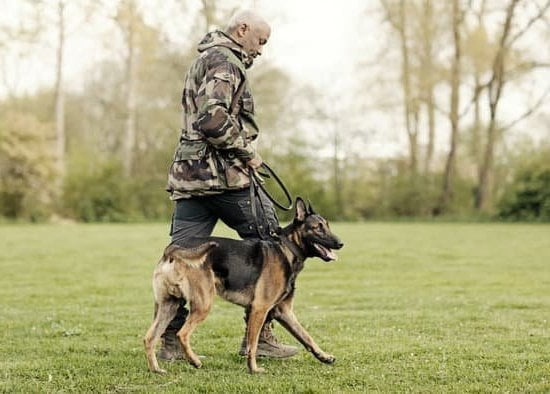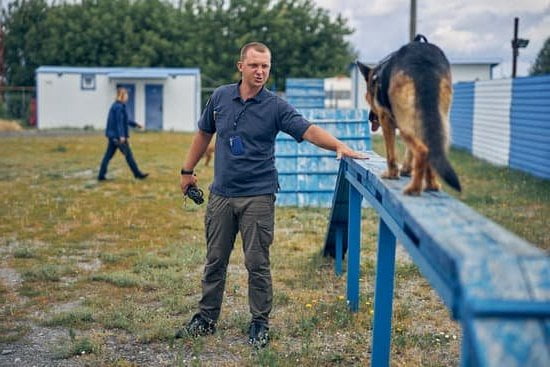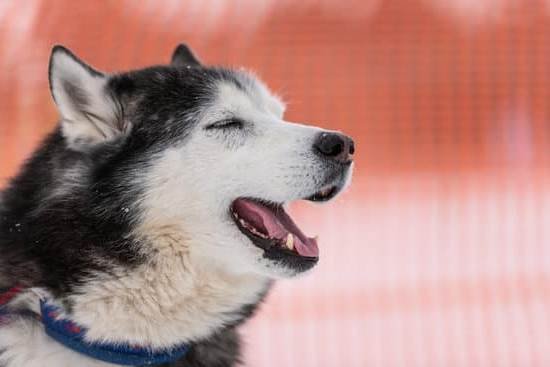Training your dog to come outside is an essential skill that every dog owner should prioritize. Not only does it enhance safety, but it also provides opportunities for exercise and bonding. Teaching your furry friend to come when called can prevent potential accidents or dangers in outdoor environments while ensuring they get the physical activity they need.
Additionally, this training strengthens the bond between you and your canine companion, creating a deeper connection and understanding. In this article, we will dive into the importance of training your dog to come outside and explore the steps and techniques needed to establish a reliable recall command.
When your dog learns to come outside on command, it ensures their well-being by reducing the risk of them running off or getting into dangerous situations such as traffic or encounters with aggressive animals. It allows you to maintain control over their actions even in unfamiliar or distracting environments, giving you peace of mind during outings.
Alongside safety concerns, training your dog to come outside promotes regular exercise, providing them with mental and physical stimulation that is crucial for their overall health and happiness.
Moreover, teaching your dog to come reinforces the bond between you two. Effective recall training establishes trust and builds a foundation for further learning experiences together. By implementing positive reinforcement techniques and creating a positive training environment, both you and your four-legged friend can enjoy the process of bonding through this shared activity. So let’s delve into understanding the basics of this important training technique, starting with building a solid foundation for success.
Understanding the Basics
Building a strong foundation and bond with your dog is crucial before starting any training, especially when it comes to teaching them to come outside. This section will delve into the importance of establishing trust and using positive reinforcement techniques during the training process.
One of the key elements in training your dog to come outside is building a strong bond with them. When you have a solid foundation of trust and a positive relationship, it becomes easier for your dog to understand and follow your commands.
Dogs are pack animals by nature, so they naturally look to their owners for guidance and direction. By fostering a strong bond with your dog through daily interactions, playtime, and praise, they will be more inclined to listen and respond when you call them to come outside.
To effectively train your dog to come outside, positive reinforcement techniques are essential. This means rewarding your dog for desired behaviors rather than punishing them for unwanted behavior. By using rewards (such as treats or praise) whenever your dog successfully responds to the recall command, you are reinforcing that coming back to you is a positive experience. This creates motivation for your dog and increases the likelihood of them coming every time you call.
In addition, consistency is key when building a strong foundation with your canine companion. Dogs thrive on routine and clear expectations, so maintaining consistent cues and actions will help them understand what is expected of them during the training process.
Be patient with your dog and provide plenty of positive reinforcement during each training session. Remember that building a strong bond takes time, so enjoy the journey of strengthening the relationship with your furry friend while simultaneously teaching them valuable skills like coming outside on command.
Choosing the Right Equipment
When it comes to training your dog to come outside, having the right equipment is essential for success. The proper tools can aid in communication and reinforce desired behaviors. In this section, we will explore the different types of equipment that can be used during training and discuss their benefits and drawbacks.
- Leash: A leash is a fundamental tool for training any dog, including teaching them to come outside. It provides you with control over your dog’s movements and helps prevent them from running off or getting into dangerous situations. When choosing a leash, opt for one that is strong and durable, but not too heavy or cumbersome. A standard 6-foot leash is usually sufficient for recall training.
- Treats: Treats are excellent motivators and rewards during training sessions. Use small, bite-sized treats specifically made for dogs that they find highly rewarding. The key is to choose treats that are both enticing and easy to consume quickly so that you can continue with the training without interruptions.
- Clicker: A clicker is a small handheld device that produces a distinct clicking sound when pressed. It serves as a marker to indicate when your dog has performed the desired behavior correctly. Clickers are particularly useful for shaping behavior and reinforcing the recall command when your dog comes towards you after being called.
While these tools can greatly assist in training your dog to come outside, it’s important to use them appropriately and not rely solely on equipment. Remember that positive reinforcement techniques are crucial, so use the tools as aids rather than substitutes for building a strong bond with your furry friend.
By choosing the right equipment and understanding how to incorporate them effectively into your training sessions, you will be setting yourself up for success in teaching your dog to come outside.STYLE NOTE.
Establishing a Solid Recall Command
To ensure the safety and well-being of your dog, it is crucial to establish a solid recall command. This command will enable you to call your dog back to you whenever necessary, providing them with the exercise they need while keeping them out of potential danger. In this section, we will provide a step-by-step guide on how to train your dog to come outside reliably.
- Start with Basic Obedience Training: Before diving into recall training, it is essential to have a strong foundation in basic commands such as “sit,” “stay,” and “come.” Ensure that your dog understands and obeys these commands consistently before moving on to recall training. This will establish trust and set the stage for successful recall training.
- Use Positive Reinforcement: Positive reinforcement is key when teaching your dog to come outside. Reward desirable behavior with treats, praise, and affection to motivate your dog and strengthen the association between coming when called and positive experiences. Avoid punishment or negative reinforcement, as it can cause confusion or fear in your dog.
- Begin Close Proximity Recall Training: Start in an enclosed area such as your backyard or a quiet park where you can minimize distractions. Attach a long leash or rope to your dog’s collar, giving them freedom to move but maintaining control. Call your dog by their name followed by the recall command (e.g., “Buddy, come.”), using an enthusiastic and inviting tone.
- Add Distance and Distractions Gradually: Once your dog reliably responds to the recall command in a controlled environment, gradually increase the distance between you and your dog. Practice in different areas of your home or larger open spaces while introducing mild distractions such as toys or other people. Ensure that you maintain control by using a long leash during this phase.
- Promote a Reliable Response with Variable Rewards: To reinforce a consistent response to the recall command, transition from using treats as rewards every time to a more variable reward schedule. Sometimes reward with treats, sometimes with praise or playtime, creating unpredictability for your dog. This will help foster an innate desire for positive reinforcement consistently.
| Step | Description |
|---|---|
| 1. | Start with Basic Obedience Training |
| 2. | Use Positive Reinforcement |
| 3. | Begin Close Proximity Recall Training |
| 4. | Add Distance and Distractions Gradually |
| 5. | Promote a Reliable Response with Variable Rewards |
By following these steps, being patient, and remaining consistent, you can establish a solid recall command for your dog. Training your dog to come outside is not only beneficial for their safety but also enhances the bond between you and your furry friend. Continue reading to learn about creating a positive training environment and incorporating rewards effectively in the next sections.
Creating a Positive Training Environment
When training your dog to come outside, it is essential to create a positive and distraction-free environment. This will help your dog focus on the training sessions and increase the chances of success. By eliminating potential distractions and setting up a conducive learning atmosphere, you can ensure that your dog learns the recall command effectively.
To create a positive training environment, start by choosing a quiet and familiar location for your training sessions. It’s best to begin indoors or in an enclosed area with minimal distractions. As your dog becomes more proficient in the recall command, gradually progress to more challenging environments.
It is also important to remove any potential distractions from the training area. This includes toys, food bowls, or other animals that may divert your dog’s attention during training. Additionally, make sure you choose a time when your dog is alert and not too tired or hungry.
| Tips for Creating a Positive Training Environment |
|---|
| Choose a quiet and familiar location |
| Progress gradually to more challenging environments |
| Remove potential distractions |
| Time your training sessions appropriately |
Creating a positive environment also involves using praise and rewards effectively. Always have high-value treats or rewards readily available during training sessions. Praise your dog enthusiastically whenever they come outside successfully. Positive reinforcement will motivate your furry friend to repeat the behavior in future training sessions.
In addition to setting up the physical environment, it is crucial to consider your own mindset during training sessions. Dogs are incredibly perceptive creatures and can sense their owner’s emotions. Therefore, maintaining a calm and positive attitude can greatly influence your dog’s behavior and learning experience.
By creating a positive training environment, you are setting your dog up for success in learning the recall command. Remember to be patient and consistent throughout the training process. With time and practice, your dog will become more reliable in coming outside when called.
Incorporating Rewards and Reinforcements
Using positive reinforcement techniques is vital when training your dog to come outside. This section will explore the effectiveness of positive reinforcement and provide a variety of reward options to reinforce desired behaviors.
The Power of Positive Reinforcement
Positive reinforcement involves providing rewards or praise to motivate and encourage your dog’s desired behavior. It strengthens the bond between you and your furry friend and makes the training experience enjoyable for both parties. By associating coming outside with pleasant experiences, your dog will be more likely to repeat the behavior in the future.
It’s important to note that different dogs may respond better to specific types of rewards. Some may be motivated by treats, while others prefer verbal praise or playtime with their favorite toy. Understanding what motivates your dog will help you tailor your positive reinforcement techniques for better results.
Choosing an Appropriate Reward
There are several reward options you can use during recall training sessions. Treats are a popular choice because they are convenient, tasty, and easily portable. Opt for small, soft treats that your dog can quickly consume without getting too distracted from the training session.
Verbal praise can also be a powerful tool in positive reinforcement. Dogs thrive on approval from their owners, so using a cheerful tone and showering them with encouragement will make them feel loved and appreciated during training. Make sure to maintain consistency in your voice inflection and use a specific word or phrase (such as “Good boy/girl.”) when they successfully come outside.
Apart from food and verbal praise, playtime can be an excellent reward as well. If your dog is highly motivated by toys or enjoys interactive games like fetch or tug-of-war, utilize those activities as rewards after successful recalls.
Remember that timing is crucial when delivering rewards. The reward should immediately follow your dog’s correct response to ensure they associate it correctly. This timing will reinforce the desired behavior and create a positive training experience.
By incorporating rewards and positive reinforcement techniques, you can maximize the effectiveness of your recall training sessions and strengthen the bond between you and your dog. Being consistent and patient with this approach will lead to a solid recall command that your dog will confidently respond to in various outdoor scenarios.
Overcoming Challenges
Identifying Common Challenges
Recall training can sometimes present challenges, as dogs are naturally curious and easily distracted. It is important to be prepared for these challenges and have strategies in place to address them. One common challenge is when a dog does not respond to the recall command at all or only responds inconsistently. This can be frustrating for dog owners and potentially dangerous if the dog runs off in an unsafe environment.
Another common challenge is when a dog becomes easily distracted by their surroundings, such as enticing scents or other animals. Dogs have a strong sense of smell and are naturally curious, which can make it difficult to keep their attention focused on coming back to you. Additionally, some dogs may exhibit selective hearing, especially if they are engaged in an activity they find more interesting than returning to their owner.
Offering Practical Solutions
To overcome these challenges, there are several practical solutions that can be applied during recall training. One effective approach is to gradually increase distances and distractions over time. Start with practicing recall commands in a quiet and familiar environment before gradually transitioning to more distracting environments, such as parks or crowded areas. This allows your dog to build up their responsiveness gradually and become acclimated to different stimuli.
Consistency is also key when addressing common challenges in recall training. Ensure that all family members or frequent caregivers use the same command words and techniques consistently so that your dog learns what is expected of them regardless of who gives the command. Establishing a routine with consistent reinforcement will help reinforce the recall behavior and build trust between you and your dog.
Troubleshooting Tips
If you find that your dog is consistently struggling with recall training, it can be helpful to analyze the potential reasons behind their behavior. Is there something more enticing outside that they would prefer over coming back inside? Are they comfortable with the training environment? Evaluating these factors can help you identify any underlying issues and make appropriate adjustments.
Additionally, using high-value rewards and reinforcements can be helpful when facing challenges in recall training. Experiment with different types of treats or toys that your dog finds highly rewarding.
This will provide them with an incentive to respond promptly to the recall command, even in the presence of distractions. Remember to always praise and reward your dog immediately when they come back to you, as this reinforces their good behavior and motivates them to continue responding to the recall command.
Maintaining Consistency and Long-Term Success
Once you have successfully taught your dog the recall command, it is crucial to maintain consistency and reinforce the training over time. By doing so, you can ensure that your dog’s recall remains reliable in various environments and situations. Consistency is key when it comes to training your dog, and gradual progression will help solidify their understanding of the command.
To maintain consistency, continue practicing the recall command regularly with your dog. Incorporate it into your daily routines, such as during walks or playtime in the park. Consistent practice will prevent your dog from forgetting what they have learned and will reinforce the importance of coming when called. Remember to always use positive reinforcement techniques, such as praise or treats, to reward your dog for a successful recall.
In addition to consistency, gradually progress by increasing the difficulty level of distractions and distances during training sessions. Start by practicing in a controlled environment with minimal distractions, then gradually introduce more challenging situations. For example, practice calling your dog from a short distance before gradually increasing the distance between you both. This gradual progression will help build confidence in both you and your dog.
It’s important to note that reinforcement is not limited to rewards; verbal praise and physical affection are equally effective in reinforcing desired behaviors. Additionally, continue incorporating regular training sessions even after achieving a reliable recall command. This ongoing reinforcement will enhance your bond with your dog while reinforcing their obedience skills.
By maintaining consistency through regular practice and gradual progression in training sessions, you can ensure long-term success with your dog’s recall command. The key is to establish a strong foundation by building trust and using positive reinforcement techniques from the beginning. With time and dedication, you’ll be able to rely on your furry companion’s dependable response when calling them outside.
Bonus Tips and Tricks
Building a strong recall command with your dog is essential for their safety and well-being. Once you have established a solid foundation and your dog has mastered the basics of coming outside, there are additional tips and tricks that can further enhance their training. In this section, we will explore how to go beyond the basics and take your dog’s recall training to the next level.
One important tip when going beyond the basics is to start proofing the recall command in different environments and situations. Dogs learn through repetition and consistency, so it’s crucial to practice the recall command in various settings. Start by gradually introducing distractions, such as other dogs or mild noises, and reinforce the recall command when your dog responds correctly. As your dog progresses, gradually increase the difficulty of distractions to help them become more reliable in real-world situations.
Another advanced technique is to incorporate distance and duration into your recall training. Gradually increase the distance between you and your dog when practicing their recall, rewarding them for successfully coming back to you from a greater distance.
Similarly, work on extending the duration that your dog stays with you before receiving their reward. By combining these two elements into your training sessions, you can teach your dog to come to you quickly from a long distance and stay with you until released.
It’s also beneficial to introduce intermittent reinforcement during recall training. Instead of rewarding your dog every time they come to you when called, vary the rewards unpredictably. This helps prevent reliance on treats or rewards every single time they obey the command while maintaining motivation and engagement with the exercise.
By implementing these bonus tips and tricks into your dog’s recall training journey, you can continue strengthening their skills beyond basic obedience. Remember that patience, consistency, and positive reinforcement are key throughout this process. With dedication and practice, you’ll be celebrating success as your well-trained dog consistently comes outside whenever called upon.
Conclusion
In conclusion, training your dog to come outside is an important endeavor that can have numerous benefits for both you and your furry companion. By teaching your dog a reliable recall command, you are ensuring their safety, providing them with much-needed exercise, and strengthening the bond between you.
Building a strong foundation of trust and positive reinforcement techniques is crucial before starting the training process. It is essential to establish a solid bond with your dog based on trust and mutual respect. By using positive reinforcement methods, such as treats and praise, you can motivate your dog to come outside reliably.
Choosing the right equipment, such as a leash, treats, and clickers, can also greatly aid in the training process. These tools provide structure and consistency as you work towards teaching your dog a reliable recall command. However, it is important to carefully consider the benefits and drawbacks of each tool before incorporating them into your training routine.
Creating a positive training environment free from distractions is vital for successful recall training. Minimizing distractions and creating a conducive learning atmosphere will help your dog focus on the task at hand. Additionally, incorporating rewards and reinforcements will further reinforce the desired behavior of coming outside when called.
Overcoming challenges that may arise during recall training requires patience, consistency, and practical problem-solving techniques. Identifying common obstacles and providing solutions will help you navigate through any difficulties that may arise during the training process.
To ensure long-term success in maintaining a reliable recall command, it is crucial to maintain consistency and gradually progress in reinforcing this behavior over time. Reinforcing the recall command in different environments and situations will help your dog generalize this behavior.
In closing, celebrating the success of training your dog to come outside is an important part of this journey. Recognize the hard work and dedication that goes into effectively teaching your dog this valuable skill.
With a well-trained recall command, you can enjoy peace of mind knowing that your furry friend will come back safely when called. So, embark on this training journey and reap the benefits of a well-trained dog who can confidently come outside at your beckoning call.
Frequently Asked Questions
How do I train my dog not to run away outside?
Training a dog not to run away outside requires consistency, positive reinforcement, and appropriate boundaries. Start by ensuring your dog has a secure and enclosed area to play in, such as a fenced yard or an outdoor pen. Practice leash training so that your dog gets accustomed to being near you and following commands.
Gradually increase the distance between you and your dog while on the leash, rewarding them with treats and praise for staying close. If your dog does attempt to run away, calmly call them back using a command like “come” or “here,” offering treats and encouragement when they return. Repeat this training regularly and reinforce good behavior, gradually allowing your dog more freedom as they learn to stay close.
What do you do when your dog doesn’t come when called?
When faced with a dog that doesn’t come when called, it’s important to approach the situation with patience and positive reinforcement. First, examine if there are any underlying reasons why the dog may be ignoring your calls, such as distractions or fear. Remove any potential distractions from the environment and work on building your dog’s trust in you through consistent bonding activities.
Engage in regular training sessions dedicated specifically to recall commands in different settings. Start in a quiet area where there are no distractions, call their name followed by a command like “come” or “here,” then reward them generously with praise and treats upon arrival. Gradually increase the level of distraction as your dog becomes more reliable at coming when called.
How do you train a dog to pee and poop outside?
Training a dog to pee and poop outside involves establishing a routine and reinforcing positive behavior consistently. Establish specific times for bathroom breaks throughout the day that align with your dog’s natural schedule, such as after meals or naps. Take them outside on-leash to designated bathroom spots in your yard or nearby areas where you want them to eliminate. Encourage them with verbal cues such as “go potty” or similar phrases while they’re doing their business outside.
When they successfully go outdoors, provide praise, treats, and affection to reinforce the behavior. If accidents occur indoors, avoid punishments and instead focus on preemptively taking them outside more often or reverting to more frequent bathroom breaks until they consistently understand that outside is the appropriate place to eliminate. Regular consistency, positive reinforcement, and patience are essential for successful potty training.

Welcome to the blog! I am a professional dog trainer and have been working with dogs for many years. In this blog, I will be discussing various topics related to dog training, including tips, tricks, and advice. I hope you find this information helpful and informative. Thanks for reading!





